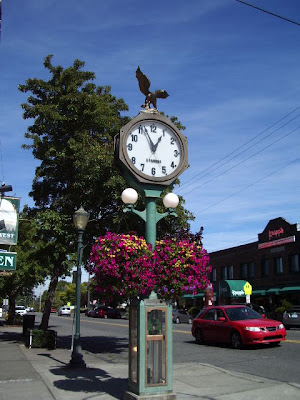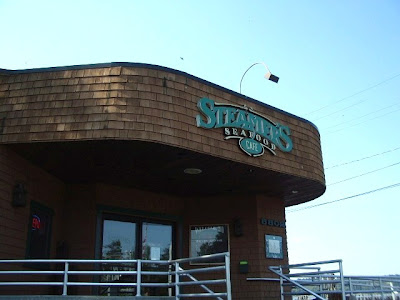 Now that the holiday gift giving season is over, how much additional “stuff” do you have in your house? How much of it do you really want or actually need? And how much did your own gift giving add to the clutter and waste in the world? On this last day of the old year, and eve of the new, my biggest resolution for 2009 is to live with LESS. I mean less spending and consumption, less clutter, less to care for and store, and less stress, resulting in MORE of my most precious resources: time and energy to enjoy my life.
Now that the holiday gift giving season is over, how much additional “stuff” do you have in your house? How much of it do you really want or actually need? And how much did your own gift giving add to the clutter and waste in the world? On this last day of the old year, and eve of the new, my biggest resolution for 2009 is to live with LESS. I mean less spending and consumption, less clutter, less to care for and store, and less stress, resulting in MORE of my most precious resources: time and energy to enjoy my life.As a young child in the late 1950s and early ‘60s I loved looking at the Sears and Roebuck Christmas Catalog and coveting all those new toys. At the same time I’d hear “old” people say they didn’t want any gifts because they already had everything they needed. To me that sounded just plain CRAZY. In my teen years it seemed embarrassing that my mother did things like saving buttons off worn-out garments before tearing them up into cleaning rags, or using vinegar and water to wash windows instead of buying Windex. It took her awhile to accept the idea of paper towels people just threw away after using, and the same with plastic packaging and disposable diapers. If some old apple tree produced nothing but wormy apples she’d cut off the salvageable parts and make applesauce. I blamed it all on the fact that she’d lived through the Great Depression, but wished she’d “get with it”. Mom was so old fashioned.
Oh my, if only she had lived to see me now…
My mother was right. I have my own jar of used buttons and a “rag bag” and more. Sorry Mom, but by now I’ve surpassed even you, in the recycling department, and when I use up this last roll of plastic wrap I’m not buying any more, even though I‘m kind of “clingy” in my relationship with that stuff. My friends and I get excited about discovering bargains and brag to each other about our thrift store and yard sale finds. It’s a big thrill to make something from nothing or find clever ways of reusing things. My husband and I love poking around architectural salvage places like Second Use, where we’ve found old bricks from Seattle’s original streets for a garden path, and a beautiful antique light fixture for our entry. Similar items show up at Tacoma’s Habitat for Humanity ReStore. It feels good to give new life to old things or pass along what you don’t need to someone who can use it.
When I visited Telluride, Colorado a few years ago (where there’s no shortage of money) I discovered the town had a “free box”. People leave things they don’t want or need, like clothing, household goods, books, tools, etc. and anyone who comes along is welcome to take whatever they want. I loved that idea and would like to see other communities start it up. But on the internet I found a bunch of fun and informative sites with the same treasure hunt appeal.
So… in honor of the memory of my mother, here’s a list of some great web resources for recycling, reusing, trading, bartering, and reducing waste, I hope you’ll enjoy.
Second Use Building Materials
Tacoma’s Habitat for Humanity ReStore
Habitat for Humanity U.S. directory of stores with many in the Pacific Northwest. Look for one near you.
Olympia Salvage
Freecycle
Barterquest
The Re-Store (Bellingham and Seattle, WA)
Hippo Hardware in Portland, OR
Earthwise Salvage
Remember your local used book stores. In Tacoma try:
Kings Books, Culpepper's, Point Defiance Books, and Half Price Books
Book Mooch
EcoGeek
Planet Green
Simple Living-"30 days to a simpler life"
More Life Less Stuff
Earth 911
Green Yahoo
And this one is full of fun ideas…
Ecologue
Check out the topics called “Recycled Goods” and “Crafty Recycling” for some interesting projects you can do, some suitable for kids.
Enjoy! Here’s wishing you a great new year with less of what you don’t need and more of the things that matter.





































